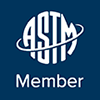Thinking of hiring a consultant for a short or specialized project? Here are a few tips to make the relationship a success.
Consultants allow clients to complete specialized tasks and gain extra capacity easily without hiring a full-time person. A good consultant is professional, reliable, honest and efficient but the client-consultant relationship still needs to be a good fit for both sides. The truth is, it’s best to use the same screening and evaluation process for a consultant as you would for an employee. Here are four key tips to success when working with a consultant.
Interview
Always interview a consultant as you would a prospective employee. Consultants are not employees, but they ultimately work for you! Therefore it’s best to conduct a thorough interview and find out about their technical qualifications, work experience and communications style.
Get References


